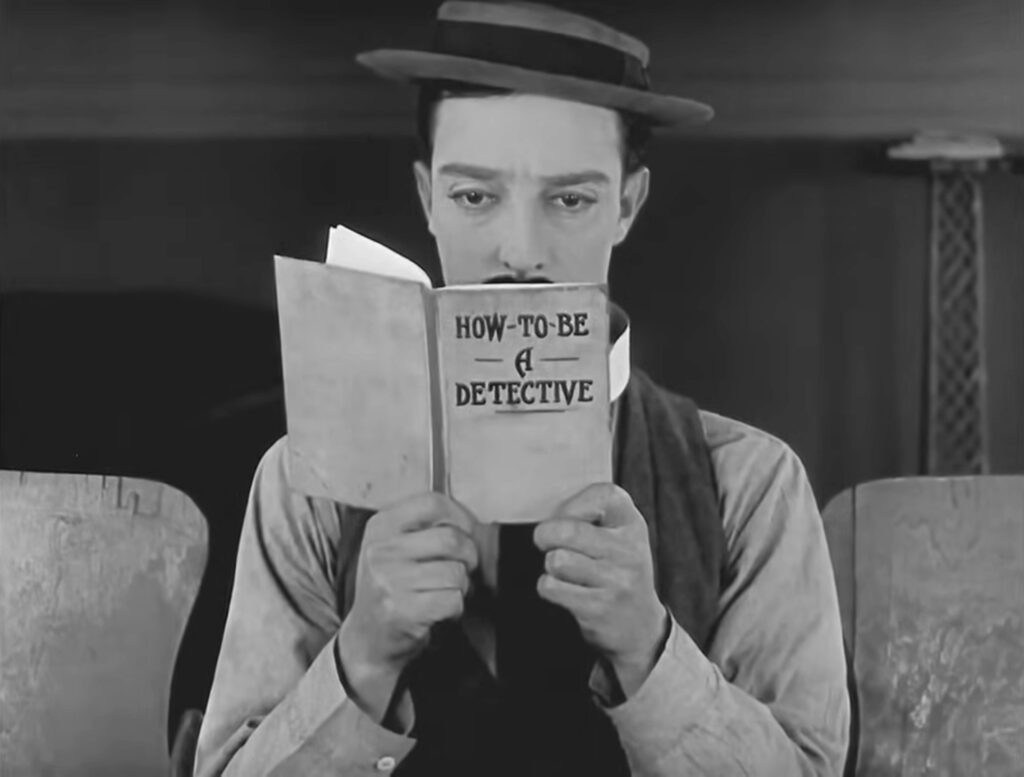
Sherlock Jr.
1924, directed by Buster Keaton
Imagine yourself at an early screening of Sherlock Jr. The cinema darkens, the curtains part, the titles go by, and then – instead of being transported into some adventure – you’re confronted with a mirror image, looking from one movie theater into another. It must a little bit disappointing. The fictional cinema is even less lively than your own because it’s so empty. Buster Keaton is alone in the back row, reading How To Be a Detective, and in this too he holds a mirror to the viewer. If you’ve come for a taste of the excitement missing from your life, so has he. Keaton’s a lowly projectionist, a wage earner dreaming of a more heroic profession.
Halfway through Sherlock Jr., in the same movie theater, this reflection will reverse itself. The camera will turn 180° toward the screen. A film within the film will mirror the young projectionist’s recent events, and in a dream he’ll step into the screen to continue his story in a more dramatic fashion. The inner film, like so many real Hollywood films, will indulge his fantasy, making him rich and letting him play a hero, but the larger film that contains it has a different agenda. To put it as simply as possible, the aim of Sherlock Jr. is to ground its audience in reality, counteracting the prevailing current of Hollywood’s influence.
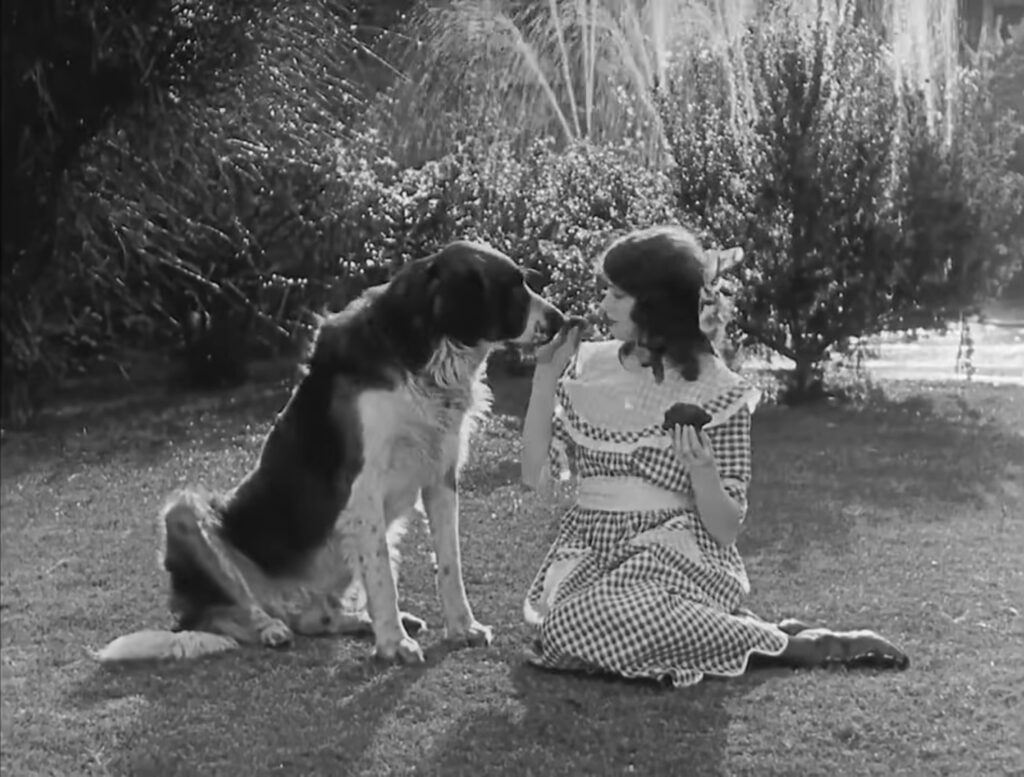
After we catch Keaton fantasizing about being a detective, he’s thrust into a harsh economic reality. His boss comes in and scolds him: “Before you clean up any mysteries, clean up this theater.” The following sequence underscores his economic disadvantage. The girl he loves belongs to the leisure class, sitting on a landscaped lawn with a big dog and a sprinkler, and her father is so well off that he hires a servant to do nothing. Keaton wants to woo her with a box of chocolates, but he’s a dollar short. Back in the theater lobby his boss walks by flipping through a loaded billfold. Keaton finds a dollar in the trash he’s swept up, but it turns into a net loss as two customers come back to claim it. Even the scruffy man who comes in next, an apparent vagrant, turns out to be richer than Keaton, scoffing at the boy’s last dollar and finding his own wallet full of banknotes in the trash heap.
Here the boy’s rival is introduced, the “local sheik”, a suave and more masculine fellow who also lacks the three dollars for the chocolates, but that doesn’t bother the “sheik”. He’ll make up for it by stealing the girl’s father’s watch, pawning it for four dollars, and pinning the theft on Keaton. Switching into detective mode, Keaton shadows the thief, comically mimicking the man’s smallest movements in a choreographed foot chase. The mimicry has a double meaning – Keaton could easily become like his criminal rival if his dreams of glory go unchecked. For now he’s saved from this fate. The “sheik” catches him, and he abandons his efforts at crime solving until his dream begins.
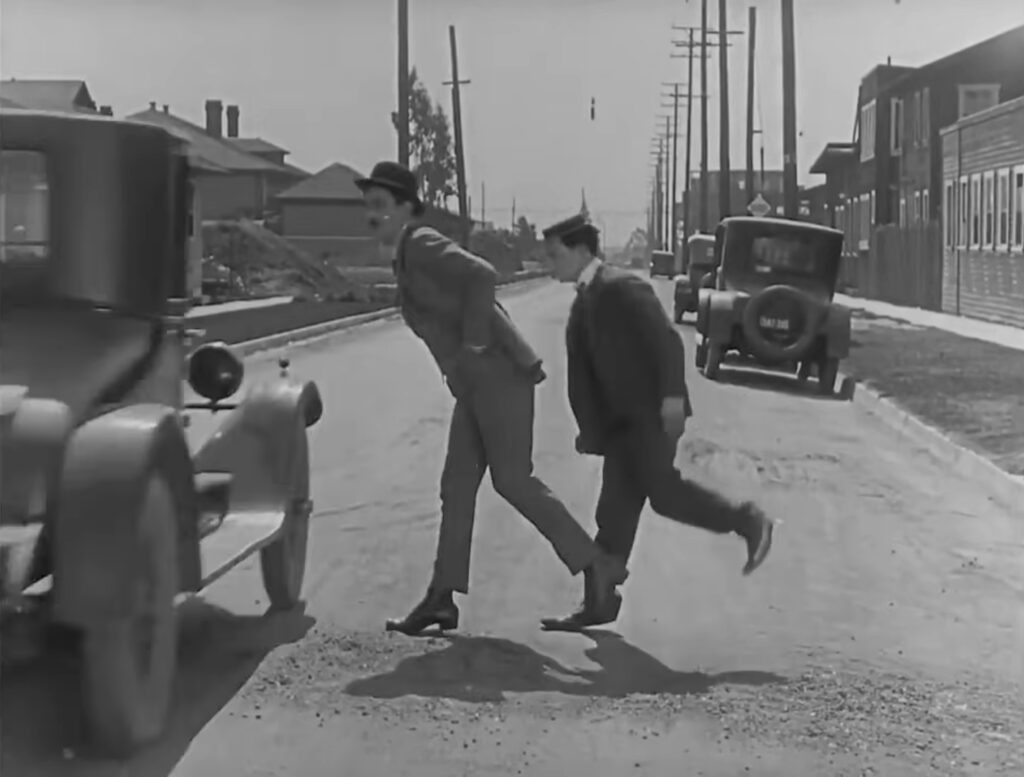
The transition from reality to fantasy lasts over five minutes. It begins when the boy turns the projector on and the inner film (Hearts & Pearls) gets underway. The inner film mirrors real life, replacing each real character with a fictional one and substituting a stolen pearl necklace for the father’s four-dollar watch… but the boy’s dream adds a new layer of fiction, transforming the projected film into something even more personal. Angered to find his rival and his beloved together, he steps across the threshold only to get booted out, re-staging the earlier moment when he had crossed the curtains in the girl’s house to impose himself before being rudely sent back to the living room with a banana in hand, a coded suggestion to satisfy himself sexually.
Before the adventurous dream tale begins in earnest, the boy must endure a surreal series of trials, still framed by the movie theater’s proscenium, organ, and front rows of seating. At first the door to the girl’s mansion is held onscreen far too long while he stands there, shut outside. It’s a simple joke at the inner film’s expense, but it continues as he finds himself in a surreal shot sequence, bouncing helplessly from the garden to a busy street, a rugged mountainscape, a jungle with lions, a desert, a rough sea, deep snow, then back to the garden before reality reasserts itself, leaving him behind until he re-enters as a dapper detective. The sequence does several things at once. First, it supplies a series of laughs. Second, the capricious editing reminds us of the artifice of cinema, how movies depart from reality even when they mean to make us forget that. Third, it disrupts the rhythm, allowing the film to leave Buster Keaton behind for a while and enter his dream fully, zooming in gently so that the proscenium vanishes almost at the exact midpoint of Sherlock Jr.
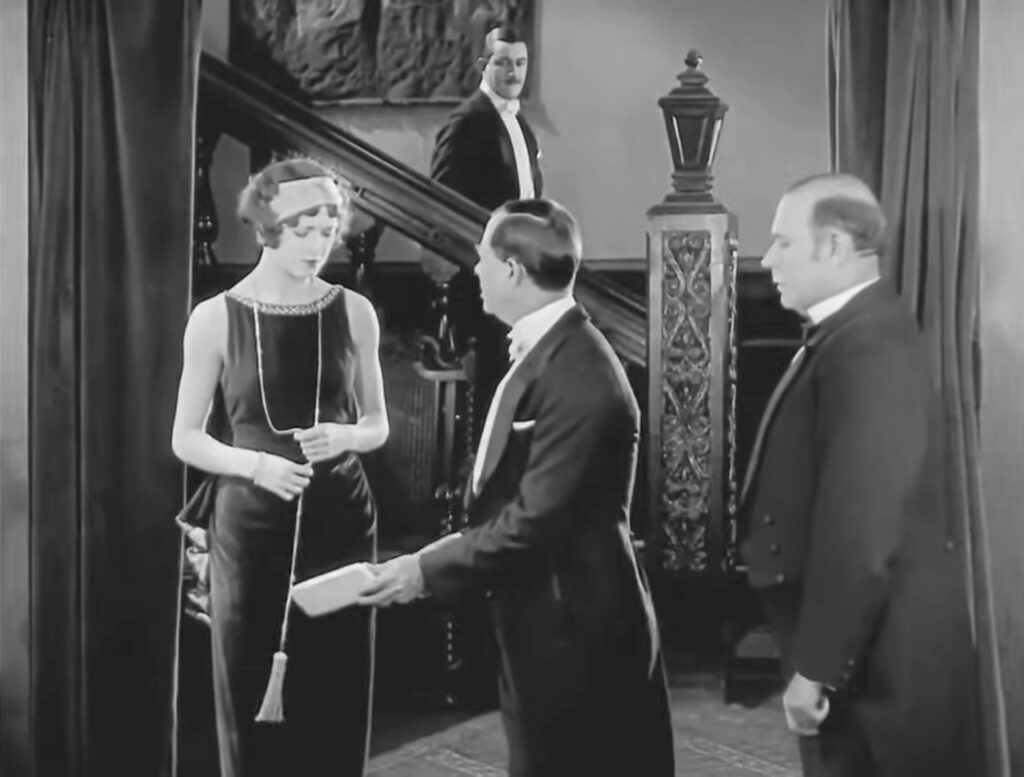
A fourth reason for this surreal passage is more compelling. By yanking the boy out of the story momentarily then taking him from civilization to raw nature and back, it gives him a kind of rebirth, making it almost credible when he emerges later in coattails, top hat, and gloved hands as a famous detective. Later, as the film gears up for its climax, he’ll go through a more literal rebirth – equally nonsensical – when he escapes his enemies by leaping into the stomach of his assistant through a trick door in a tie salesman’s open briefcase.
Still there’s another point about this mad sequence of wild backgrounds. It continues a pattern already established, which will become stronger in the climactic chase as the boy confronts a gang and rescues the girl. True to the film’s purpose of grounding its audience in reality, it constantly dances around the line between the real and the dramatic; and every time water appears, it returns us – or someone – to reality. The sprinkler in the girl’s yard is like a picturesque fountain, reminding us of the boy’s comparative penury. His first (and only real-life) adventure as a detective comes to an end when he’s doused under a railroad tank. The intertitle calls attention to water’s role in this pattern: “As a detective he was all wet, so he went back to see what he could do to his other job.” Again, the absurdist sequence in the big transition ends with water – violent waves crashing around the rocky islet, and deep snow – before returning Keaton to reality in the garden.
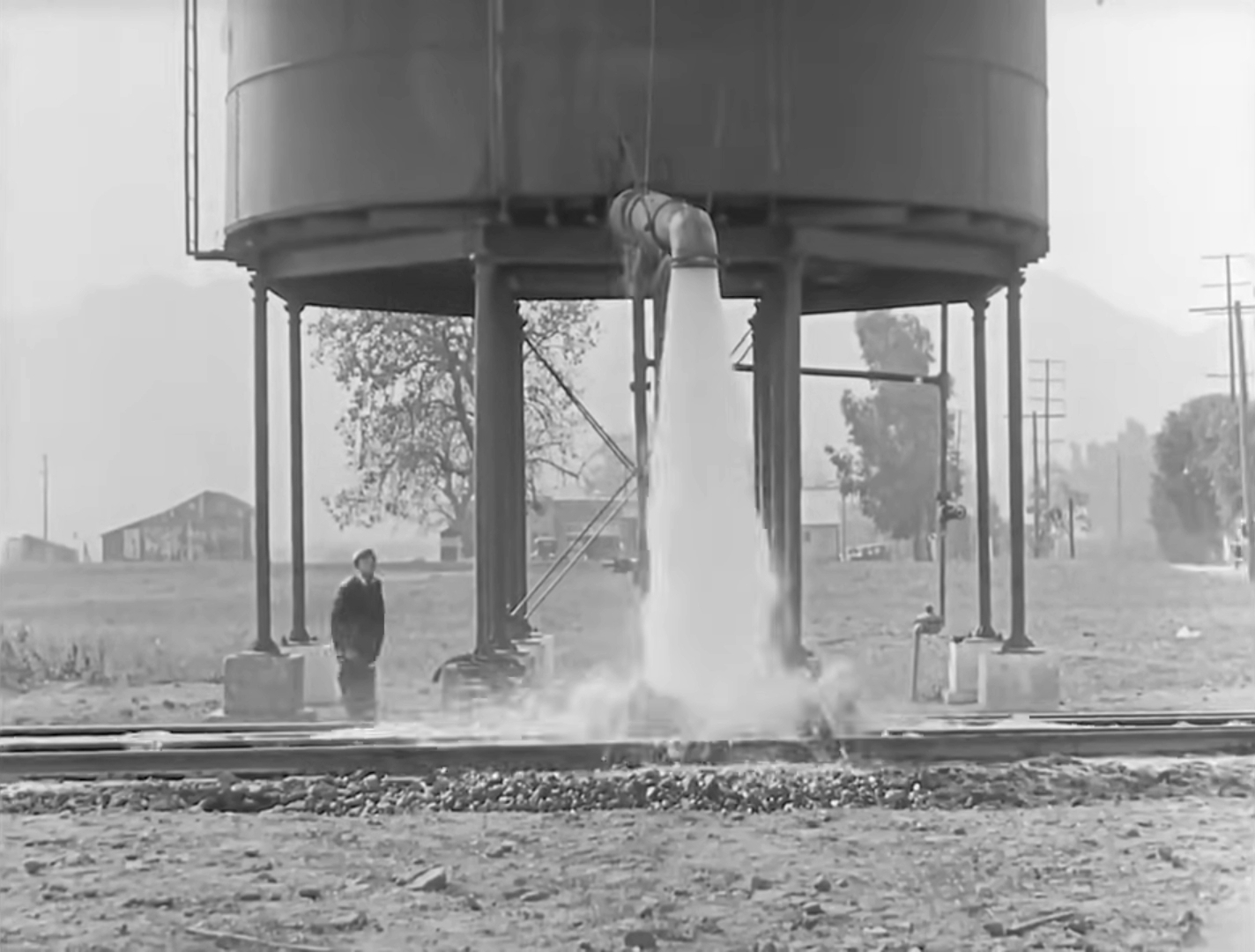
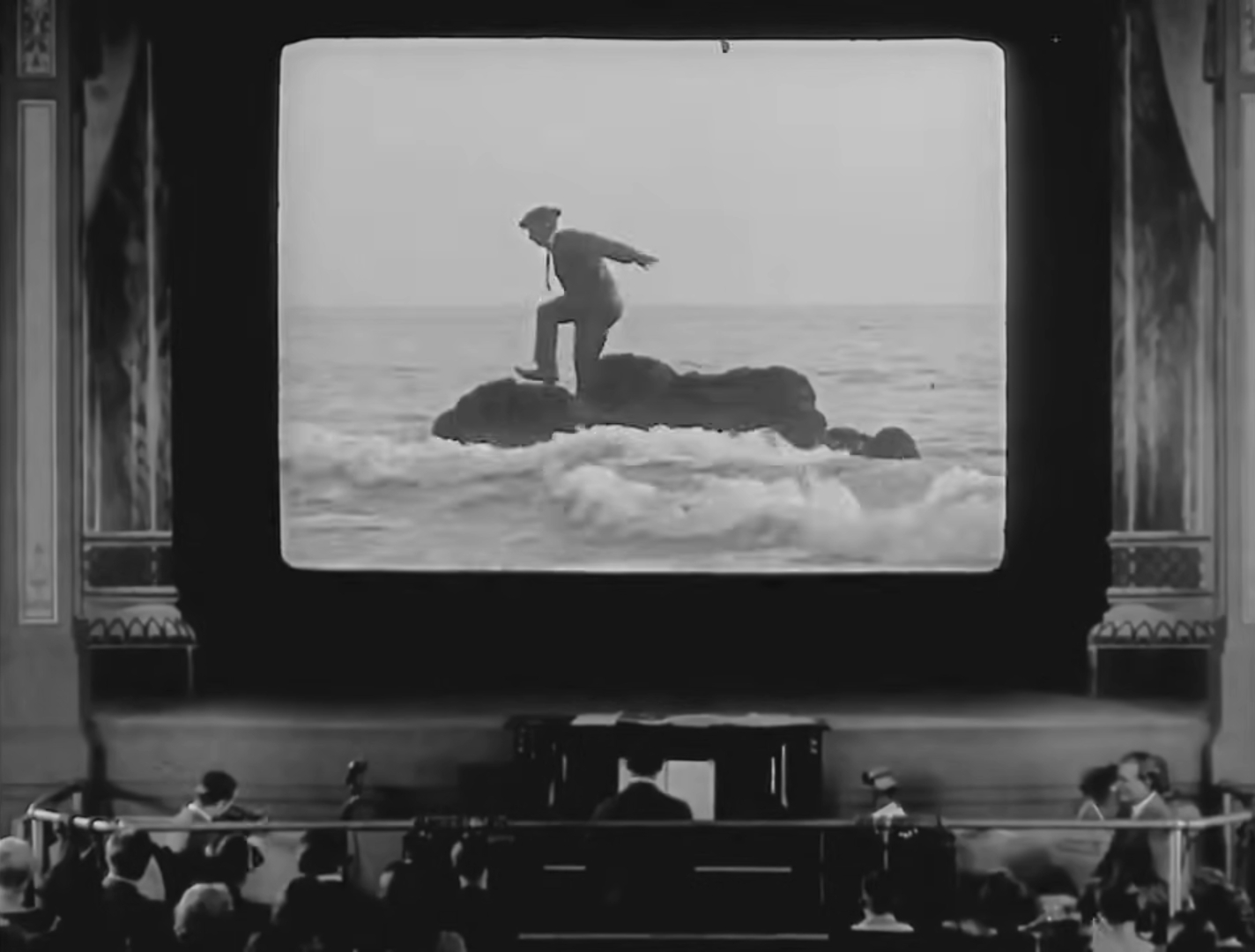
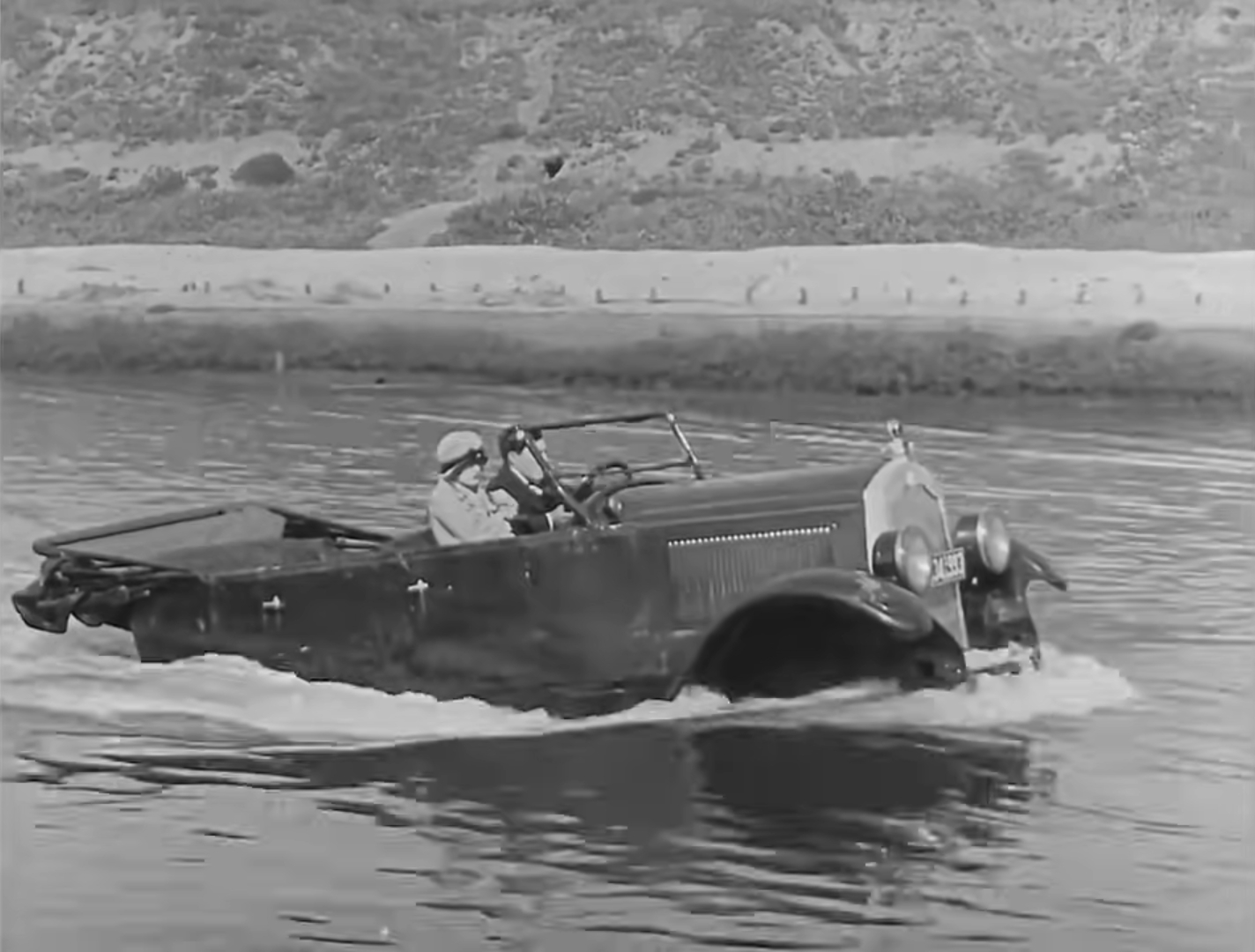
Water appears four times in the final chase, each time bringing someone down to earth. First, the detective’s assistant Gillette (dressed as a cop) falls off the motorcycle while crossing a ditch, leaving Keaton alone on the handlebars, still trusting in his driver. The runaway motorcycle knocks over a woman in a wet crossing and a pair of men in a stream, and the projectionist’s dream ends when he and the girl ditch a car in a lake and start sinking. The boy wakes up making desperate swimming motions on the projectionist’s stool. The pattern is most telling though when it’s broken. Riding the motorcycle across one bridge, the boy is lucky to make it across a gap when two large trucks pass through, filling the precariously empty space. It’s precisely because the bridge crosses a dry riverbed that he’s not brought down to earth.
The point of all this is to draw our attention as often as possible, with a sense of humor to make it palatable, to the reality behind the fantasy that cinema customarily presents. The film’s signature punchline, the close brush with danger, is one way of foregrounding the artifice of fantasy. Sherlock Jr. is an extended exercise in deflation, urging us to believe that the imaginary “better life” that movies so often present is not worth the price. The villain gets his nickname “the local sheik” from the 1921 Rudolph Valentino hit The Sheik, insinuating that the romantic desire to live like a movie star is socially problematic, leading people if not into outright crime then at least tempting them with an unrealistic vision of life. Keaton’s character begins as a dreamer, aspiring to live the glamorous life of the famous detective Sherlock Holmes, who was already a staple of film adaptations including a 1922 version with John Barrymore.
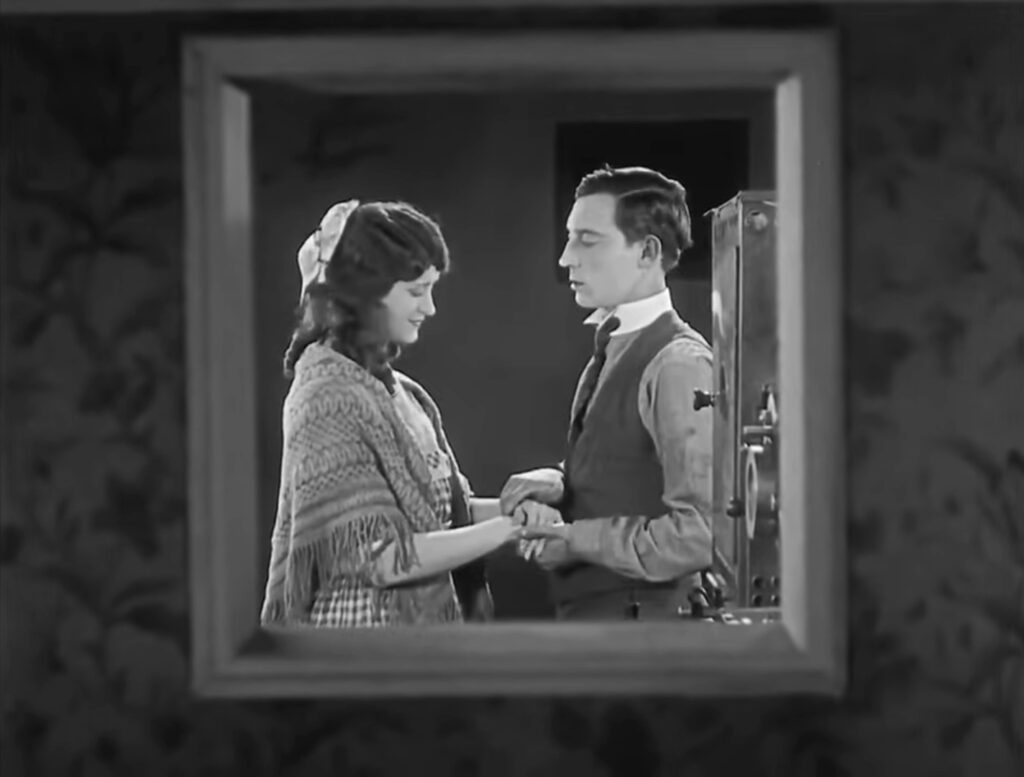
The protagonist’s real wish, however, is to win the love of the girl, who’s ironically a better detective than he is – but when he finally gets this wish at the end, the film quickly brings him down to reality. Looking down from the projection booth, in a coda scarcely more likely to appear onscreen than all the absurd nature footage earlier, he sees the hero and heroine of Hearts & Pearls after their wedding, the new husband happily bouncing a pair of twins on his lap. Keaton scratches his head, and his puzzlement is ambiguous. On one hand, the boy’s been taking instructions from the movie screen as he woos the girl, but it skips a step, never explaining how to make babies. Alternatively, his quizzical look could reflect his first inkling that life with his beloved would be something other than an endless romance.
CONNECTIONS:
Warning Shadows – Film within the film that reflects and continues the preceding story
Modern Times – Protagonist enters a symbolic womb and emerges reborn
A Woman Is a Woman – Intent to expose the artifice of cinema
Matchstick Men – Argument that the glamorous “good life” promoted by Hollywood is a deception